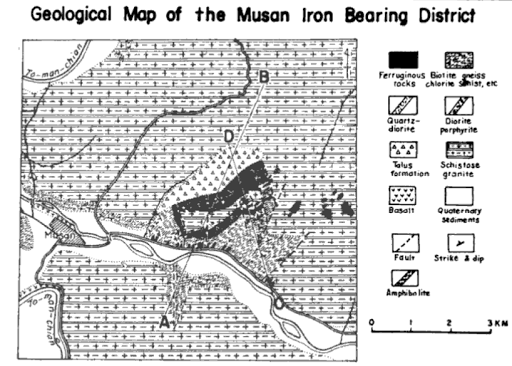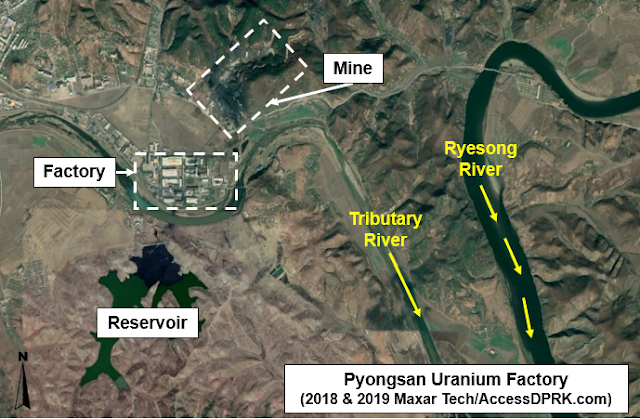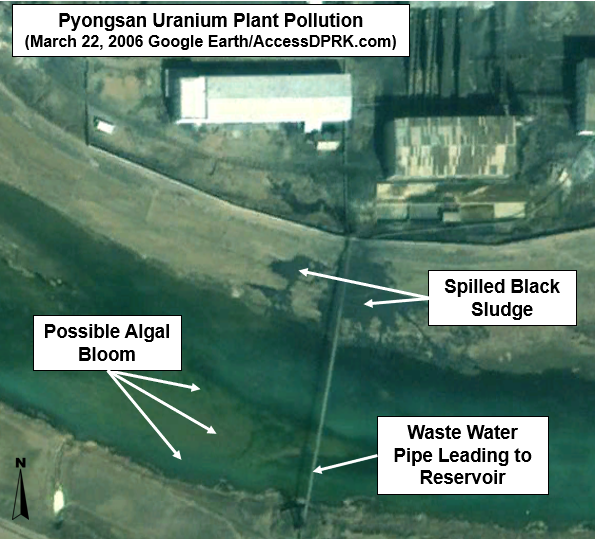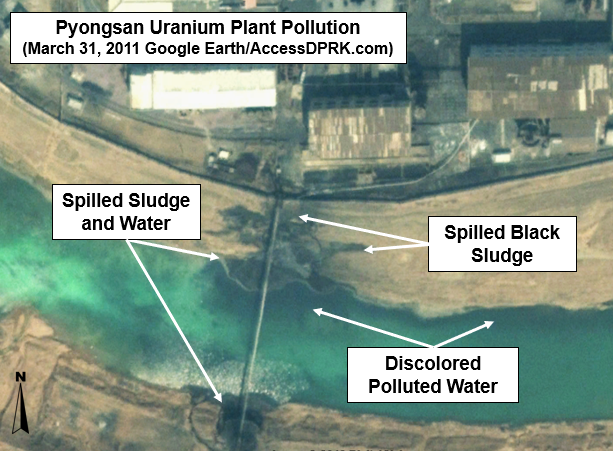Municipal waste management is a critical part of keeping cities healthy and growing. Normally, when one thinks about what a large city does with all of its garbage, images of "trash mountains" are conjured up.
The Ghazipur landfill used by Delhi, India is one of the tallest in the world, reaching over 72 meters (236 feet). And New York City's Fresh Kill Landfill once covered a vast 890 hectares (2,200 acres). It was closed in 2001 and is now in the middle of a reclamation and remediation process that will take 30 years!
Pyongyang shouldn't be any different.
A national capital and a city of 3 million, Pyongyang naturally produces large amounts of waste. Probably less waste than a comparable Western city, but even if we assume half the average rate of South Koreans, 3 million North Koreans would produce 1.8 million kilograms of garbage every single day or 657,000 tonnes (724,000 US tons) a year. So, surely Pyongyang has its own central landfill or even two to handle everything that can't be recycled?
The city does have one long-term landfill; a small 7.6 hectare (18.7 acres) site that has been in operation since at least 2000 on the banks of the Potong River at 39.070254° 125.701713° - within sight of the Pyongyang Film Studio.
But a landfill that size doesn't seem adequate. Indeed, the Middle Point Landfill in my hometown of Murfreesboro, Tennessee covers 87 ha (207 acres) and presently services an area with less than half of Pyongyang's population.
Does Pyongyang simply have an amazing recycling program? Does it use waste incinerators to burn up all of the trash?
North Korea does in fact place a high priority on recycling metal, rubber, and certain plastics. The government routinely requires the public to "donate" materials and funds to construction projects, and this often takes the form of donated recyclable materials that can then raise money for the project or be used in construction itself.
Agricultural waste, food waste, and even animal and human waste are also routinely collected and used for fertilizer. And so, North Korea does have a robust reduce, reuse, and recycle tradition.
However, those activities only take care of a portion of the waste that society generates. Single-use plastics, contaminated materials, unusable construction waste, etc. all still need to be dealt with. One way communities around the world have tackled that problem has been with waste-to-energy programs, i.e. incinerators.
Some individual facilities may have small incinerators and boilers to generate some of the electricity they need, but North Korea isn't known to have any grid-scale waste-to-energy infrastructure.
Reviewing historical satellite imagery, however, helps to reveal more details of Pyongyang's complicated municipal waste disposal program and answers the question, "where is Pyongyang's waste going?"
Looking through commercial satellite imagery dating from 2000 to 2025 shows that there have been at least 31 dumping sites around the city within the last 25 years.
All of the dump sites are located in a ring around the city, with most within 12 km of Kim Il Sung Square. I haven't found any large landfills or obvious smaller dumping grounds outside of this ring (such as in Pyongyang's satellite communities of Kangdong, Kangnam, or Sunan).
This suggests that waste from the outskirts of Pyongyang is either brought to active dumping sites via truck or, more probably, it is simply burnt by residents or otherwise disposed of through irregular means.
Although the city does have the single aforementioned permanent landfill, all of the other sites appear to have been temporary and were used not only to hold municipal waste but to also act as land fill - that is, to fill and level uneven areas of land so that it can then be built upon or otherwise put to a different use.
Of the other 30 sites that I was able to locate, ten are active dumping sites. One of them also appears to have material processing/transfer facilities and so may be part of recycling infrastructure, and another is being used to hold construction waste from the Sadong District phase of the Hwasong housing project.
Some of the dump sites involved filling in former quarries. In the Samsok District, two quarry lakes have been filled in. The upper lake is no longer used for dumping while the other remains an active site.
The last landfill that I want to highlight is an example of an industrial landfill, specifically, a coal ash basin from the East Pyongyang Thermal Power Plant.
These "ponds" hold the various combustion residue from coal-fired power plants and have been the source of major environmental accidents around the world. Ash from coal burning is slightly radioactive and contains numerous dangerous components such as arsenic and cadmium and other heavy metals.
North Korea has a long history of converting these sites into agricultural ground. At Pakchon, Pukchang, and elsewhere, decommissioned ash ponds can contain hundreds of thousands of tons of waste material and are then covered with a thin layer of soil. From there, crops are planted and harvested.
The toxins within the ash can leach into the groundwater and into the soil, where, through biomagnification, can concentrate within the plants and animals in the area and are then passed on to whatever organism eats them, including humans.
This ash pond in Pyongyang covers 47 hectares (116 acres) and was at least 5-8 meters deep before the southern half (29.8 ha) was closed and converted into agricultural land. A small internal lake or moat was left that runs for 1.2 km along three sides of the new farmland but now even that strip of water is being used as a landfill for municipal waste, filling in a 290-meter-long stretch as of 2024.
And so, the mystery of where Pyongyang puts its trash appears to be "everywhere". After recyclables are reclaimed, rubbish is directed to any number of dumping sites. Some rubbish is used to help level land, some is used to fill in ponds and quarries, and some gets taken to smaller sites for disposal.
I would like to thank my current Patreon supporters who help make AccessDPRK possible: Donald Pearce, David M., Dylan D, Joe Bishop-Henchman, Joel Parish, John Pike, Jonathan J., Kbechs87, Raymond Ha, Russ Johnson, Squadfan, and Yong H.



































